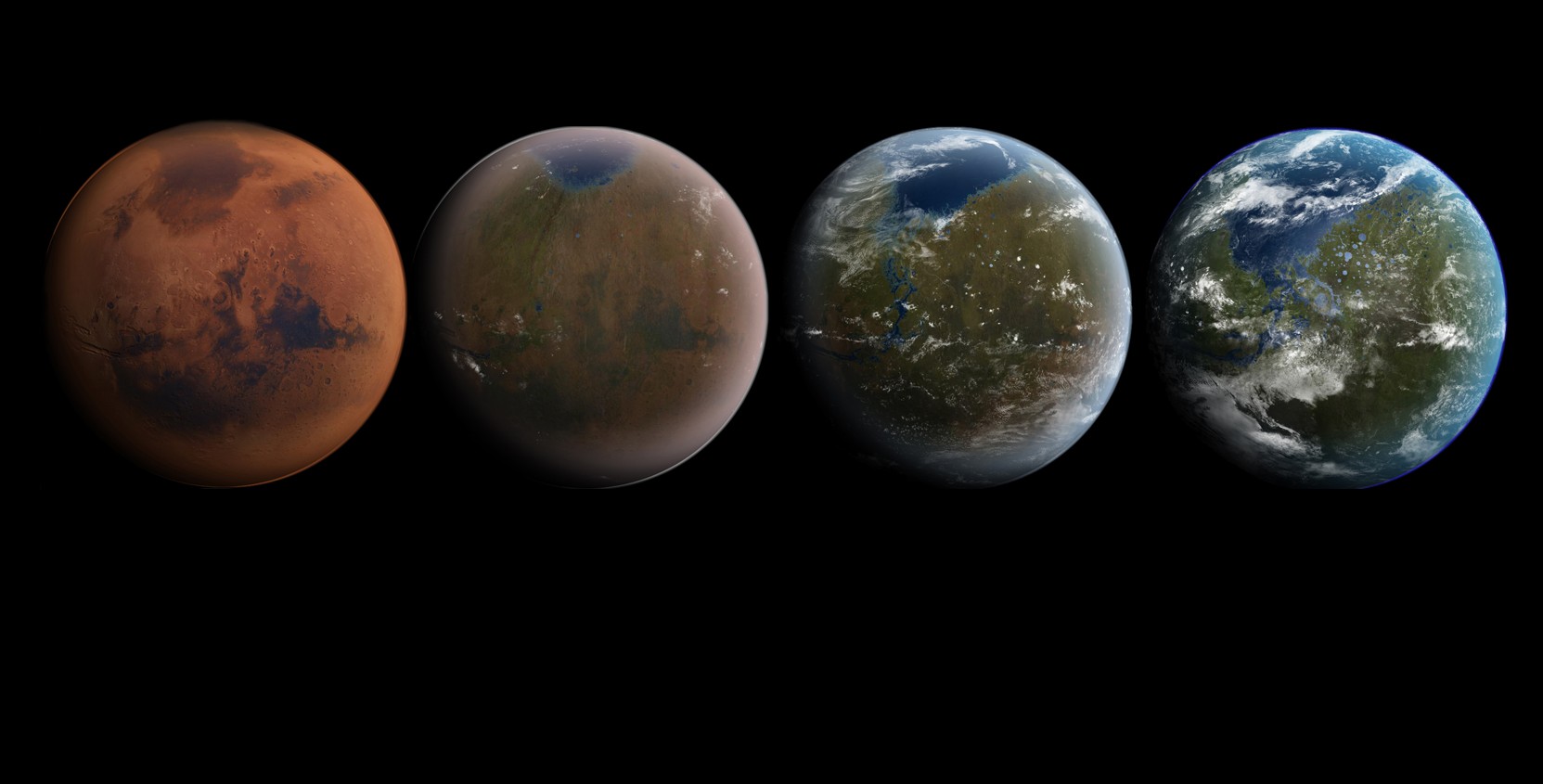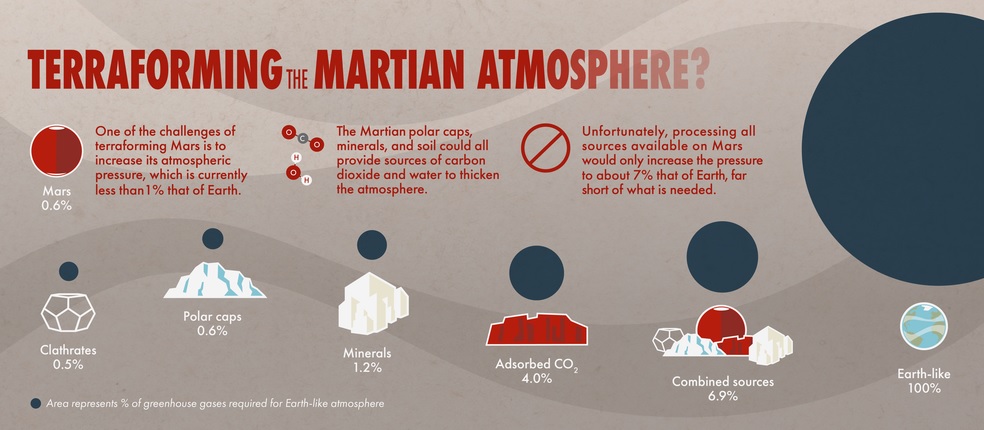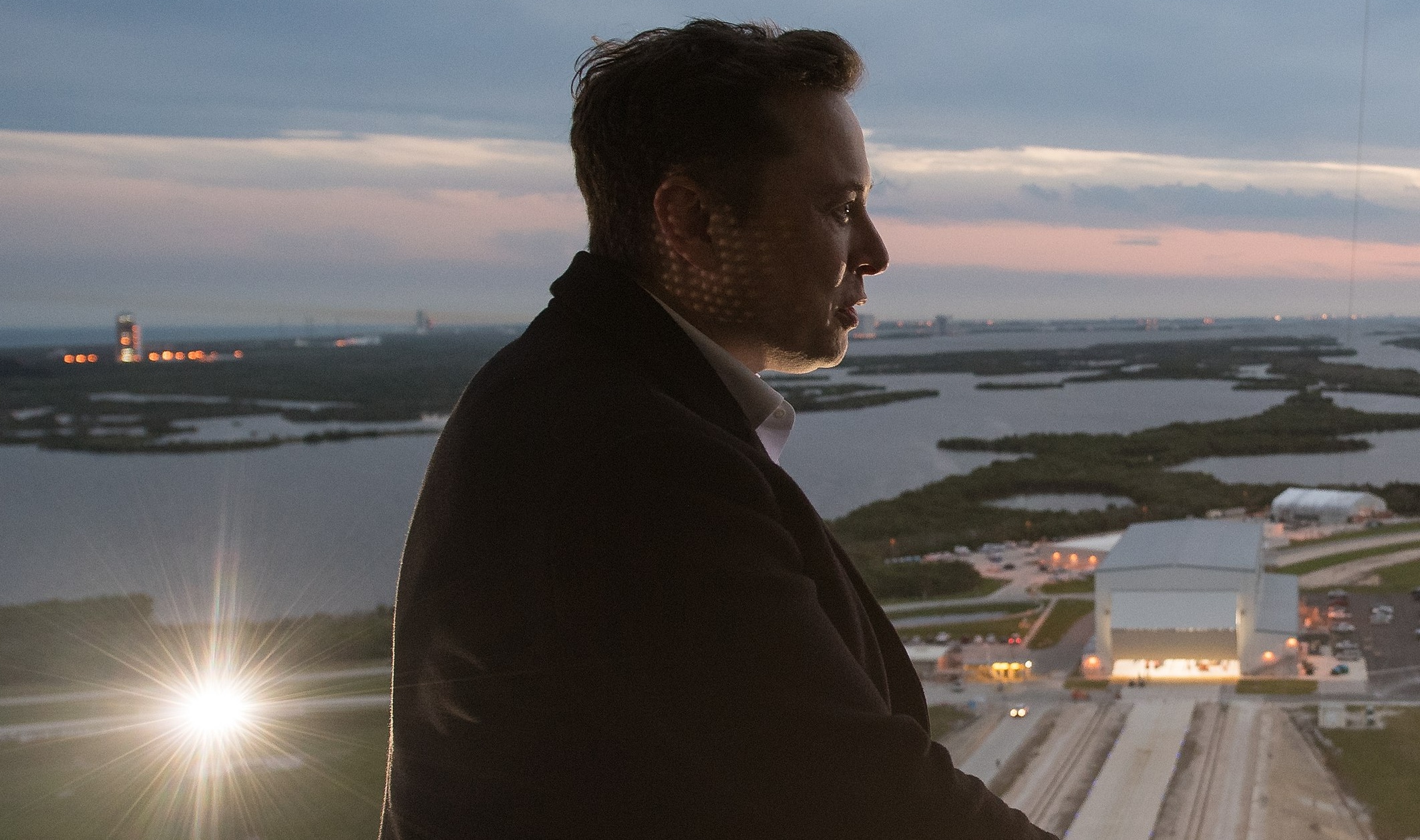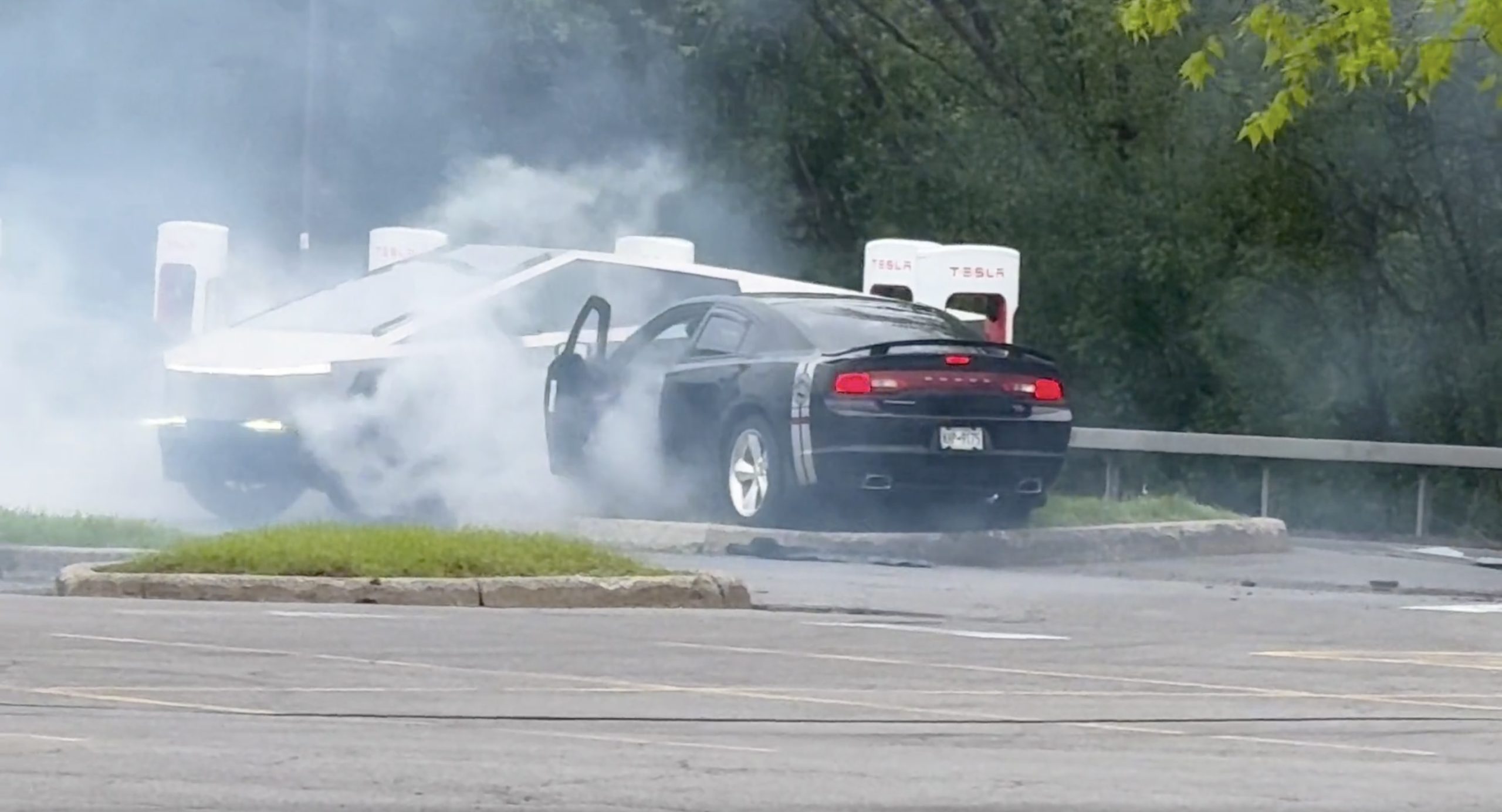

Lifestyle
Elon Musk’s plans to terraform Mars: Who knew clean energy could be so controversial?
I have to admit, I’ve been pretty fascinated with the idea of terraforming Mars ever since seeing an IMAX film discussing the topic during my week at Space Camp, um, a few years back…or so. While I’m more interested in permanent space colonies (e.g., Star Trek: Deep Space Nine), I’m also very interested in multiplanetary habitation for humans, and transforming the Martian environment rather than constantly fighting to survive in it makes me keep an open mind to the idea.
That, and the fact that Elon Musk has a successful rocket company that was founded with long-term occupation of Mars as its core purpose are handy motivators. The t-shirts are are a great plus, too. The topic is now in the headlines again (with a brand new t-shirt to boot), and the players have taken up their usual places on the game board.
Musk has doubled down on his terraforming strategy, tweeting “Nuke Mars!” and then, “T-shirt soon.” He explained a little more a few days later in response to radiation concerns with, “Nuke Mars refers to a continuous stream of very low fallout nuclear fusion explosions above the atmosphere to create artificial suns. Much like our sun, this would not cause Mars to become radioactive.” Numerous articles were then written or referred back to in response, all arguing that the calculations for such a feat were either highly unlikely or near impossible as a viable terraforming solution. I won’t pretend to have a numbers-based opinion on the matter because, frankly, I always wondered whether it would even matter if it was possible.
Working through the politics of clean energy is hard enough when you’re just talking about converting to battery-electric vehicles like what Tesla makes to reduce the use of fossil fuels. Then, when you include nuclear energy into the mix as a zero emissions option, the fights really break out thanks to the awful consequences that came from nuclear plant failures of the past and the long-term impacts that nuclear weapons have caused in wartime. It doesn’t really matter if the science says it’s pretty safe with current technology – fear of the consequences overtakes any data-driven discussion. So, when someone like Elon Musk says he wants to use a technology on Mars that struggles so much on Earth, it really feels like much ado about nothing because it will never get a green light in the first place let alone gather the resources needed to execute.
A different concept that seems to be a bit more acceptable to the science community involves reflective satellites. Musk floated this option in a tweet, saying “Might make sense to have thousands of solar reflector satellites ? to warm Mars vs artificial suns (tbd).” Since SpaceX is already in the business of manufacturing satellites at the scale that would be needed for such an undertaking with Starlink, the feasibility factor has more points than the thousands of nuclear bombs needed for an artificial sun near Mars. And, hey! Solar power (amplification) for the win, right?
However, I’m not sure whether NASA would acknowledge this strategy, either, since they’ve basically already scrubbed terraforming as an option in their opinion. A study released by the agency in July 2018 was pretty clear in its conclusions:
“Mars does not retain enough carbon dioxide that could practically be put back into the atmosphere to warm Mars, according to a new NASA-sponsored study. Transforming the inhospitable Martian environment into a place astronauts could explore without life support is not possible without technology well beyond today’s capabilities.” – Bill Steigerwald / Nancy Jones for NASA Goddard Space Flight Center.

Basically, neither nuclear energy nor solar power could terraform Mars according to everyone it seems, or at least it’s not feasible for a time frame that stretches the patience of most dreamers. Let’s pretend, though, that the science isn’t so fatalistic for a minute. After all, we don’t really know the nitty gritty details about Musk’s thought process and why he doesn’t think NASA is correct on this issue. Assume that NASA and everyone else says this is something totally possible and would do exactly what Musk et al. want it to do. Our next problems are human haters and planetary protection advocates.
There are a good number of people, or at least good number of very vocal people, that don’t think humans even deserve to colonize Mars. We’ve got enough problems to solve on Earth, they say to some effect. Even Kim Stanley Robinson, the author of the influential Martian terraforming trilogy with the titles of Red, Green, and Blue Mars, has said that Mars ‘isn’t a backup planet’ and that we need to fix our problems here before porting them to our red neighbor. I’m not saying Stanley hates humans, but rather pointing out that even someone with a grand vision for our species doesn’t think we currently have much business acting as another planet’s steward. This type of opposition can be infectious once the debate gets serious.
If you followed the story about Israel’s spacecraft crash landing on the Moon with some tardigrades aboard, you probably saw the raging debate that followed about polluting another planetary body. Honestly, I’d heard about concerns of spacecraft contamination that could interfere with the accuracy of, say, regolith analysis (how do we know what we found didn’t hitchhike from Earth, etc.), but nothing on the scale that followed the tardigrades. It reminded me a bit of an episode of Star Trek: The Next Generation (sorry for all the Trekkie references) where a terraforming team was greatly upset that they’d interfered with the environment of a crystalline, inorganic life form possessing intelligence. One crew person even shed tears over it despite one of her crew members being killed by the beings that were invisible to their equipment.
The whole outcry about the tardigrades came down to an anti-private space exploration mantra, really. Followers of Musk know how much flak comes from challenging the narrative in this arena, but SpaceX has finally made enough headway in terms of accomplishments to have overcome some of the biggest detractions. Not all of them, of course, but the victories thus far give hope for the future plans. Seeing that there was this rabid ‘Planetary Protection Police’ out there (way beyond basic science concerns) was kind of depressing. How many others will come out of the woodwork once SpaceX is actually ready to land on Mars? And with private citizens wanting to relocate there, no less?
The combination of all these things I’ve discussed kind of paints a bleak picture for ever getting off the planet and/or creating another home for humans to live on. I still have faith, though. Like fellow writer Eric Ralph suggested to me, perhaps it will all fall to the wayside once there are actual boots on the ground. The movie may already be in the works despite it all:
How I Learned to Stop Worrying and Love Martian Bombs.
Elon Musk
X account with 184 followers inadvertently saves US space program amid Musk-Trump row
Needless to say, the X user has far more than 184 followers today after his level-headed feat.

An X user with 184 followers has become the unlikely hero of the United States’ space program by effectively de-escalating a row between SpaceX CEO Elon Musk and President Donald Trump on social media.
Needless to say, the X user has far more than 184 followers today after his level-headed feat.
A Near Fall
During Elon Musk and Donald Trump’s fallout last week, the U.S. President stated in a post on Truth Social that a good way for the United States government to save money would be to terminate subsidies and contracts from the CEO’s companies. Musk responded to Trump’s post by stating that SpaceX will start decommissioning its Dragon spacecraft immediately.
Musk’s comment was received with shock among the space community, partly because the U.S. space program is currently reliant on SpaceX to send supplies and astronauts to the International Space Station (ISS). Without Dragon, the United States will likely have to utilize Russia’s Soyuz for the same services—at a significantly higher price.
X User to the Rescue
It was evident among X users that Musk’s comments about Dragon being decommissioned were posted while emotions were high. It was then no surprise that an X account with 184 followers, @Fab25june, commented on Musk’s post, urging the CEO to rethink his decision. “This is a shame this back and forth. You are both better than this. Cool off and take a step back for a couple days,” the X user wrote in a reply.
Much to the social media platform’s surprise, Musk responded to the user. Even more surprising, the CEO stated that SpaceX would not be decommissioning Dragon after all. “Good advice. Ok, we won’t decommission Dragon,” Musk wrote in a post on X.
Not Planned, But Welcomed
The X user’s comment and Musk’s response were received extremely well by social media users, many of whom noted that @Fab25june’s X comment effectively saved the U.S. space program. In a follow-up comment, the X user, who has over 9,100 followers as of writing, stated that he did not really plan on being a mediator between Musk and Trump.
“Elon Musk replied to me. Somehow, I became the accidental peace broker between two billionaires. I didn’t plan this. I was just being me. Two great minds can do wonders. Sometimes, all it takes is a breather. Grateful for every like, DM, and new follow. Life’s weird. The internet’s weirder. Let’s ride. (Manifesting peace… and maybe a Model Y.)” the X user wrote.
Lifestyle
Tesla Cybertruck takes a bump from epic failing Dodge Charger
The Cybertruck seemed unharmed by the charging Charger.

There comes a time in a driver’s life when one is faced with one’s limitations. For the driver of a Dodge Charger, this time came when he lost control and crashed into a Tesla Cybertruck–an absolute epic fail.
A video of the rather unfortunate incident was shared on the r/TeslaLounge subreddit.
Charging Charger Fails
As could be seen in the video, which was posted on the subreddit by Model Y owner u/Hammer_of_something, a group of teens in a Dodge Charger decided to do some burnouts at a Tesla Supercharger. Unfortunately, the driver of the Charger failed in his burnout or donut attempt, resulting in the mopar sedan going over a curb and bumping a charging Cybertruck.
Ironically, the Dodge Charger seemed to have been parked at a Supercharger stall before its driver decided to perform the failed stunt. This suggests that the vehicle was likely ICE-ing a charging stall before it had its epic fail moment. Amusingly enough, the subreddit member noted that the Cybertruck did not seem like it took any damage at all despite its bump. The Charger, however, seemed like it ran into some trouble after crashing into the truck.
Alleged Aftermath
As per the the r/TeslaLounge subreddit member, the Cybertruck owner came rushing out to his vehicle after the Dodge Charger crashed into it. The Model Y owner then sent over the full video of the incident, which clearly showed the Charger attempting a burnout, failing, and bumping into the Cybertruck. The Cybertruck owner likely appreciated the video, in part because it showed the driver of the Dodge Charger absolutely freaking out after the incident.
The Cybertruck is not an impregnable vehicle, but it can take bumps pretty well thanks to its thick stainless steel body. Based on this video, it appears that the Cybertruck can even take bumps from a charging Charger, all while chilling and charging at a Supercharger. As for the teens in the Dodge, they likely had to provide a long explanation to authorities after the incident, since the cops were called to the location.
Lifestyle
Anti-Elon Musk group crushes Tesla Model 3 with Sherman tank–with unexpected results
Ironically enough, the group’s video ended up highlighting something very positive for Tesla.

Anti-Elon Musk protesters and critics tend to show their disdain for the CEO in various ways, but a recent video from political action group Led By Donkeys definitely takes the cake when it comes to creativity.
Ironially enough, the group’s video also ended up highlighting something very positive for Tesla.
Tank vs. Tesla
In its video, Led By Donkeys featured Ken Turner, a 98-year-old veteran who served in the British army during World War II. The veteran stated that Elon Musk, the richest man in the world, is “using his immense power to support the far-right in Europe, and his money comes from Tesla cars.”
He also noted that he had a message for the Tesla CEO: “We’ve crushed fascism before and we’ll crush it again.” To emphasize his point, the veteran proceeded to drive a Sherman tank over a blue Tesla Model 3 sedan, which, of course, had a plate that read “Fascism.”
The heavy tank crushed the Model 3’s glass roof and windows, much to the delight of Led By Donkeys’ commenters on its official YouTube channel. But at the end of it all, the aftermath of the anti-Elon Musk demonstration ended up showcasing something positive for the electric vehicle maker.
Tesla Model 3 Tanks the Tank?
As could be seen from the wreckage of the Tesla Model 3 after its Sherman encounter, only the glass roof and windows of the all-electric sedan were crushed. Looking at the wreckage of the Model 3, it seemed like its doors could still be opened, and everything on its lower section looked intact.
Considering that a standard M4 Sherman weighs about 66,800 to 84,000 pounds, the Model 3 actually weathered the tank’s assault really well. Granted, the vehicle’s suspension height before the political action group’s demonstration suggests that the Model 3’s high voltage battery had been removed beforehand. But even if it hadn’t been taken off, it seemed like the vehicle’s battery would have survived the heavy ordeal without much incident.
This was highlighted in comments from users on social media platform X, many of whom noted that a person in the Model 3 could very well have survived the ordeal with the Sherman. And that, ultimately, just speaks to the safety of Tesla’s vehicles. There is a reason why Teslas consistently rank among the safest cars on the road, after all.
-

 Elon Musk2 weeks ago
Elon Musk2 weeks agoTesla investors will be shocked by Jim Cramer’s latest assessment
-

 Elon Musk2 days ago
Elon Musk2 days agoxAI launches Grok 4 with new $300/month SuperGrok Heavy subscription
-

 Elon Musk4 days ago
Elon Musk4 days agoElon Musk confirms Grok 4 launch on July 9 with livestream event
-

 News1 week ago
News1 week agoTesla Model 3 ranks as the safest new car in Europe for 2025, per Euro NCAP tests
-

 Elon Musk2 weeks ago
Elon Musk2 weeks agoA Tesla just delivered itself to a customer autonomously, Elon Musk confirms
-

 Elon Musk1 week ago
Elon Musk1 week agoxAI’s Memphis data center receives air permit despite community criticism
-

 News2 weeks ago
News2 weeks agoXiaomi CEO congratulates Tesla on first FSD delivery: “We have to continue learning!”
-

 News2 weeks ago
News2 weeks agoTesla sees explosive sales growth in UK, Spain, and Netherlands in June

















